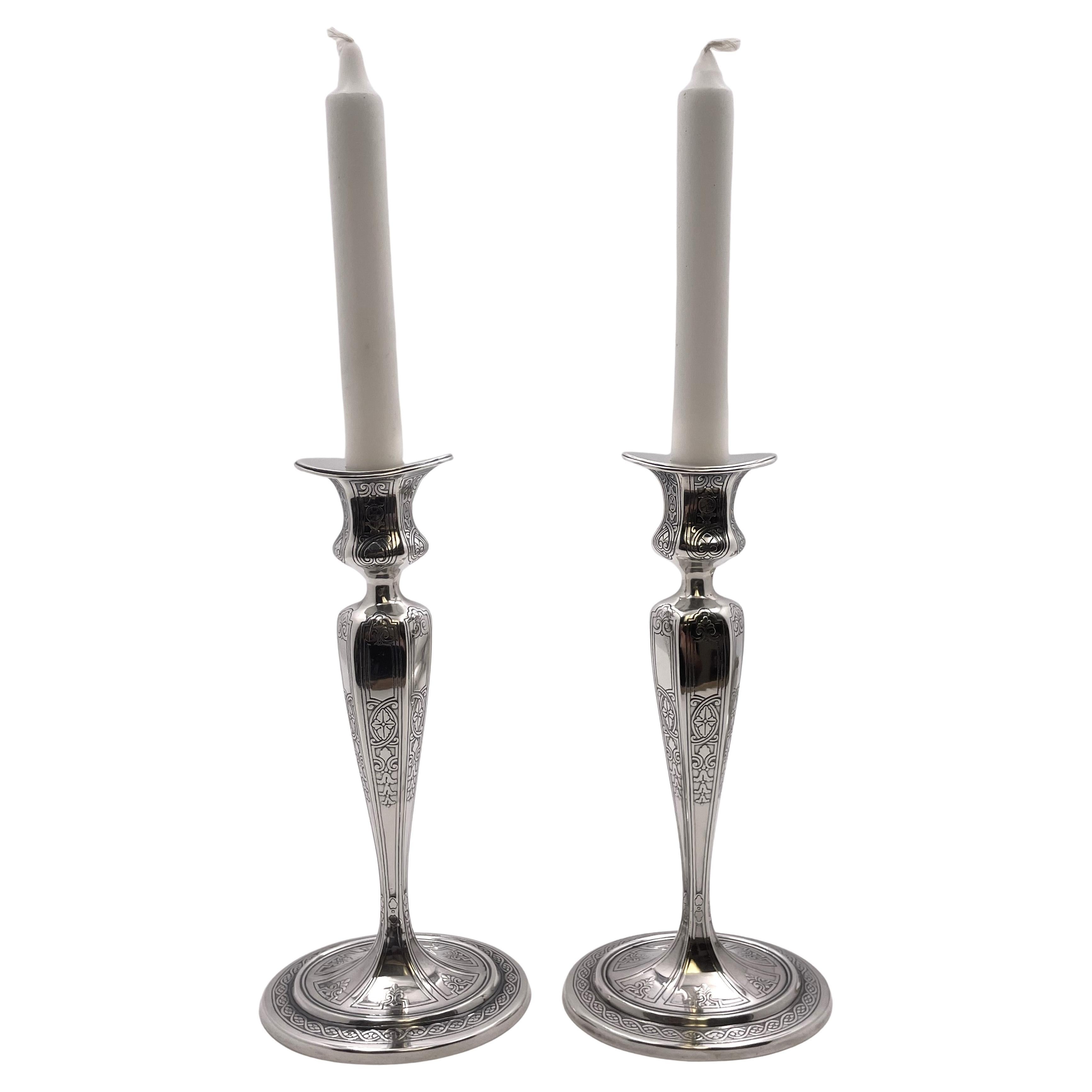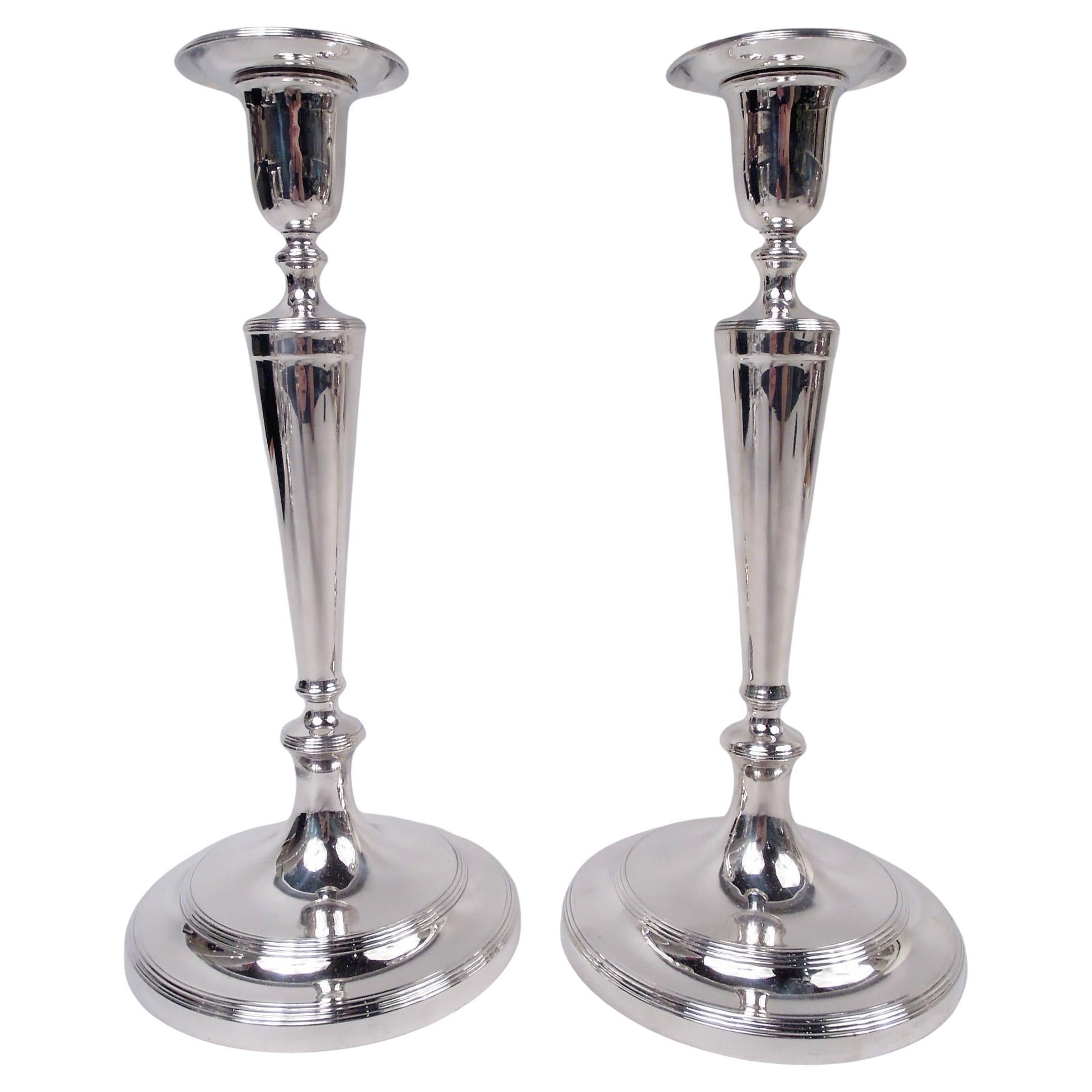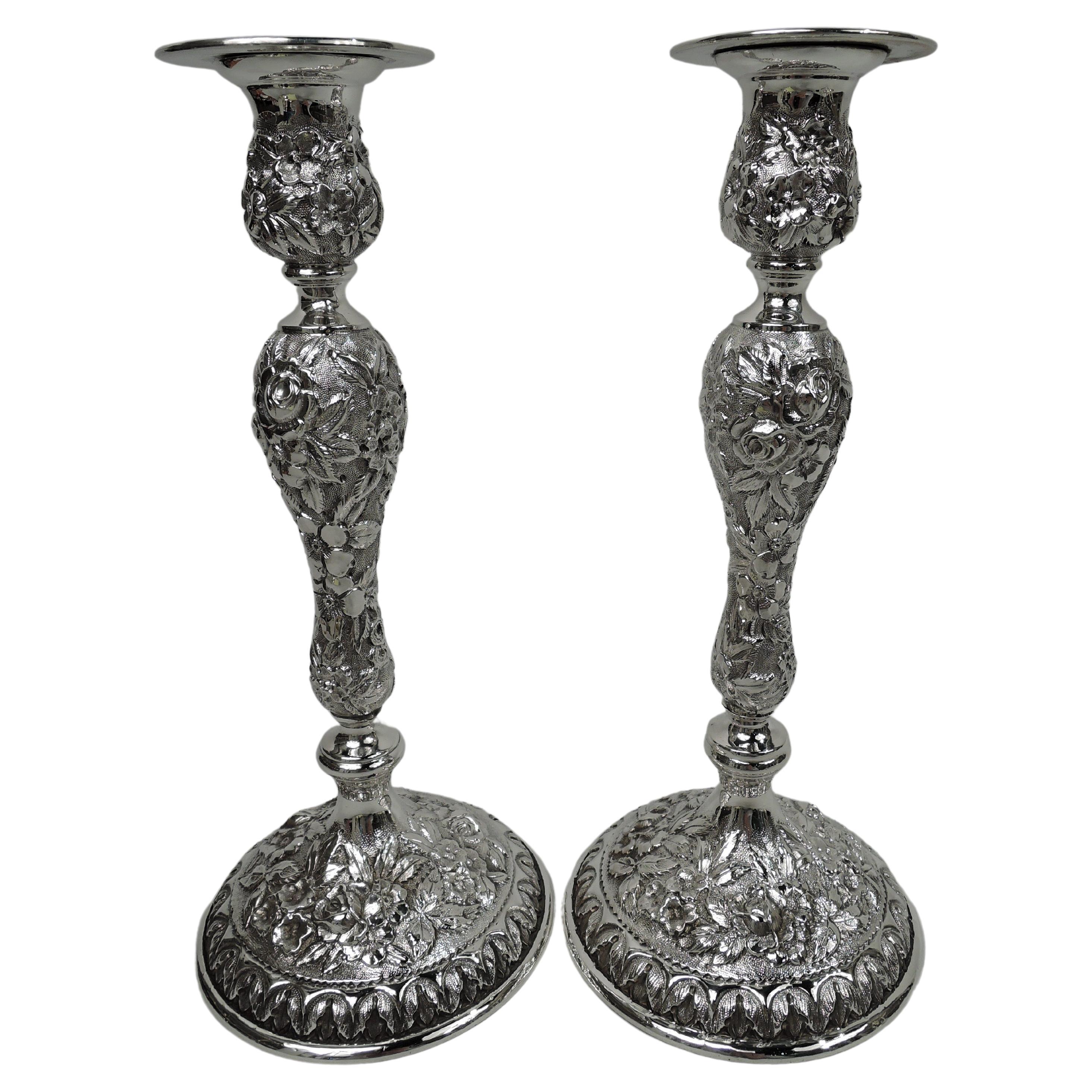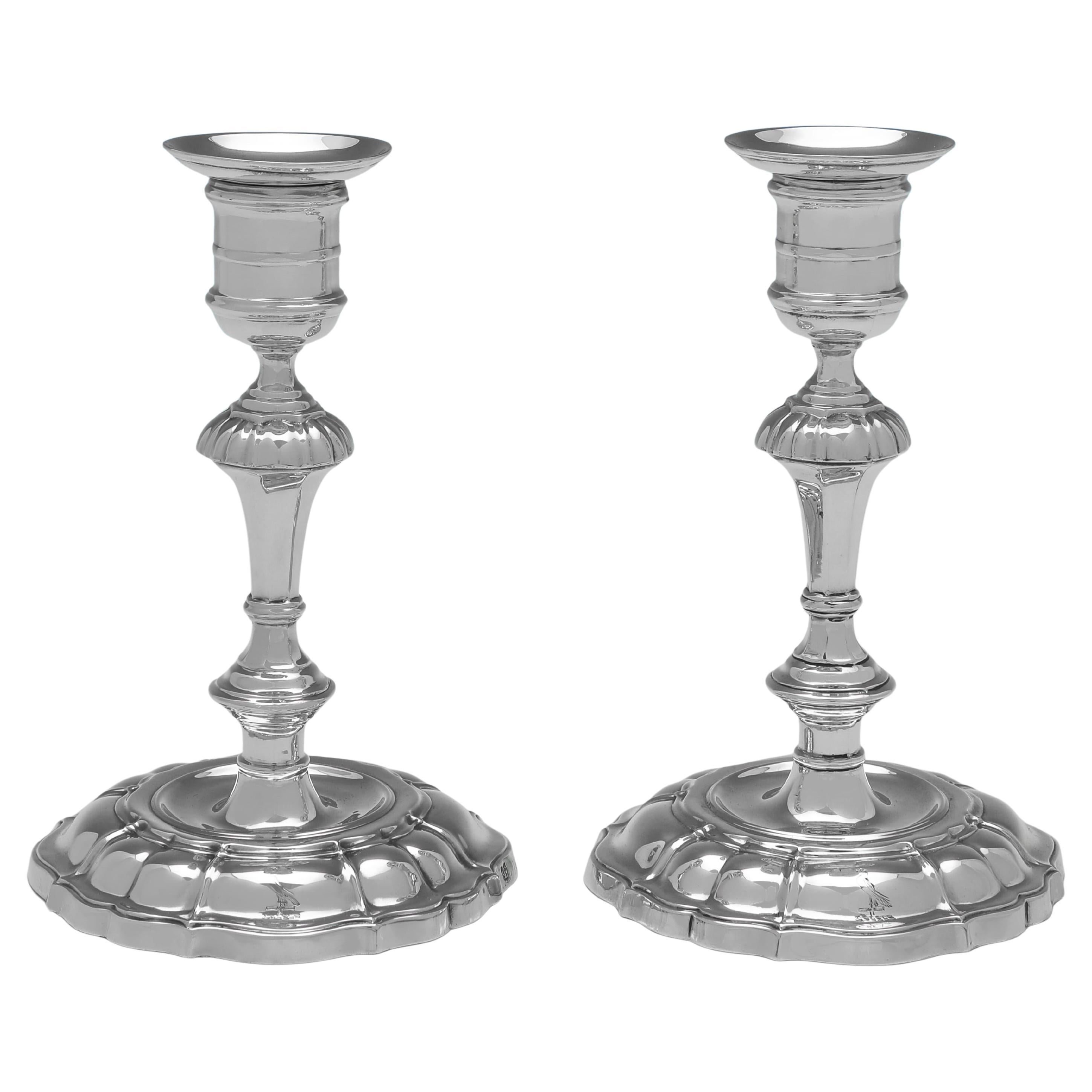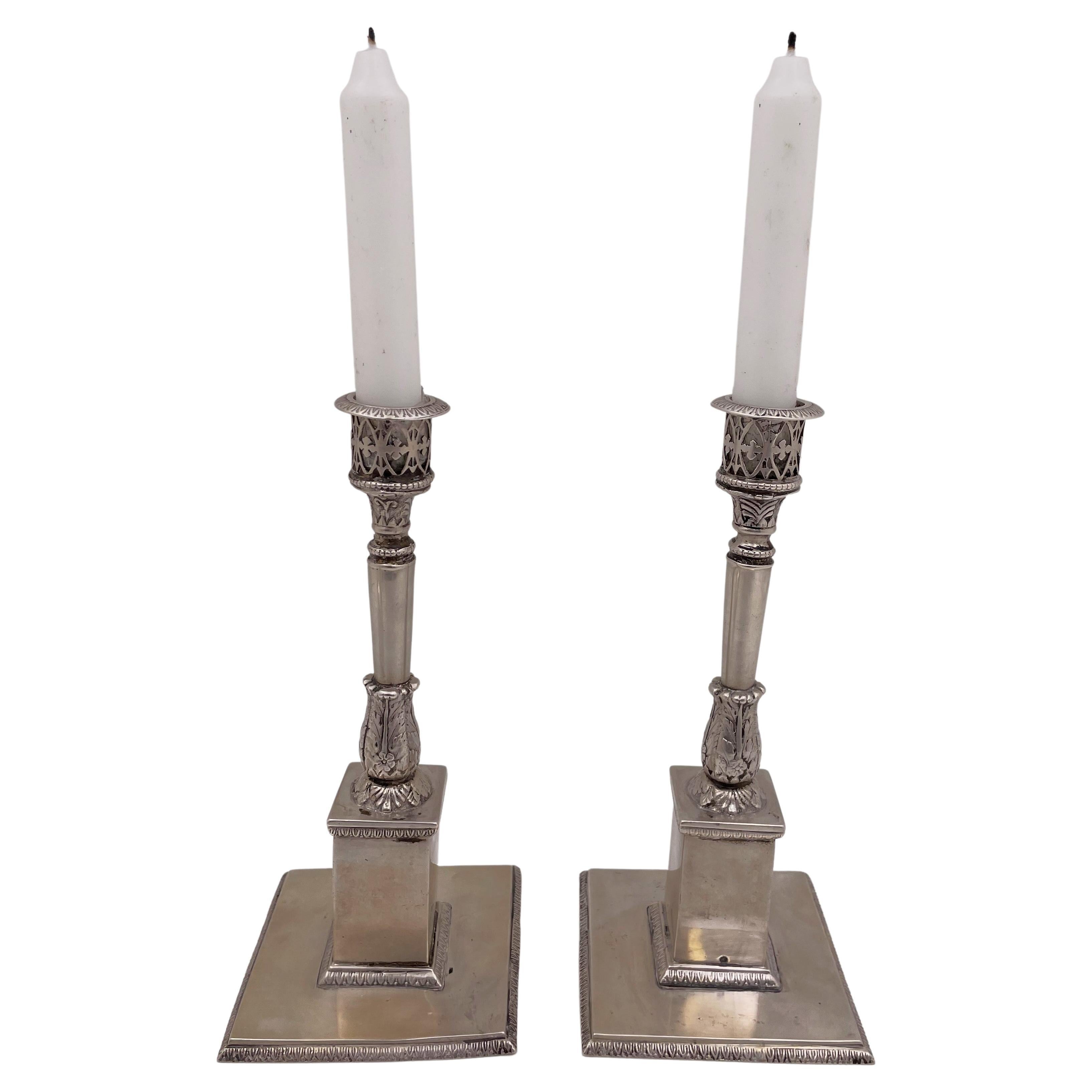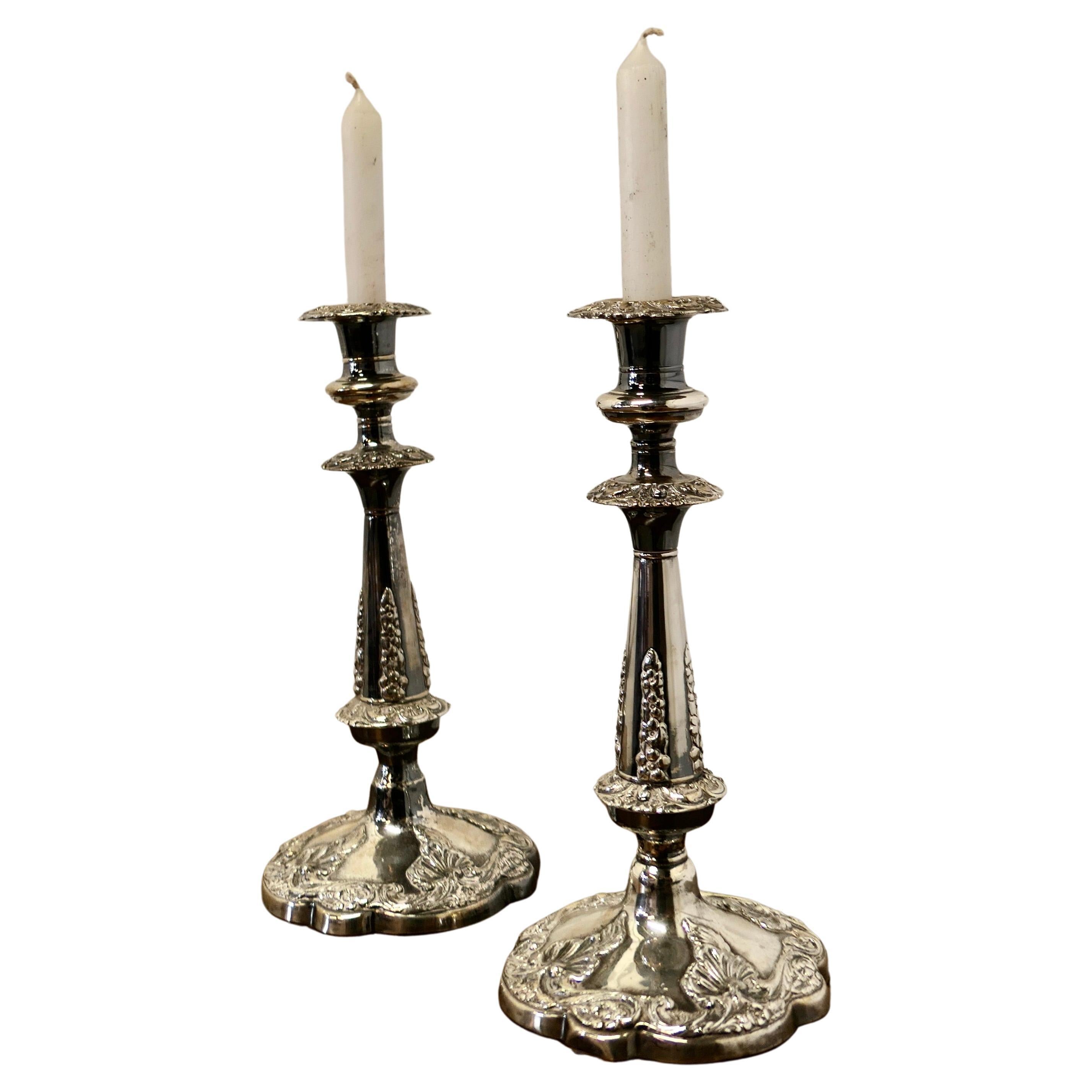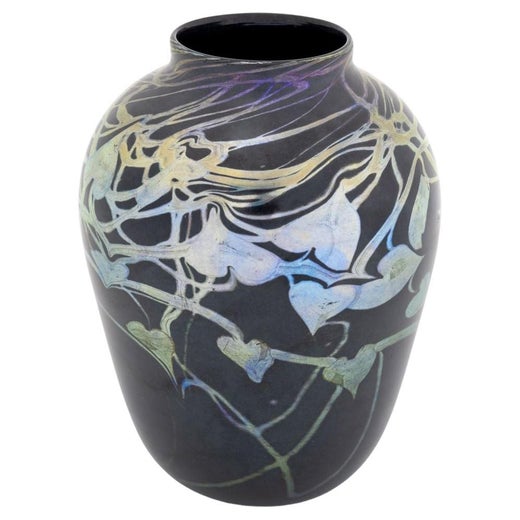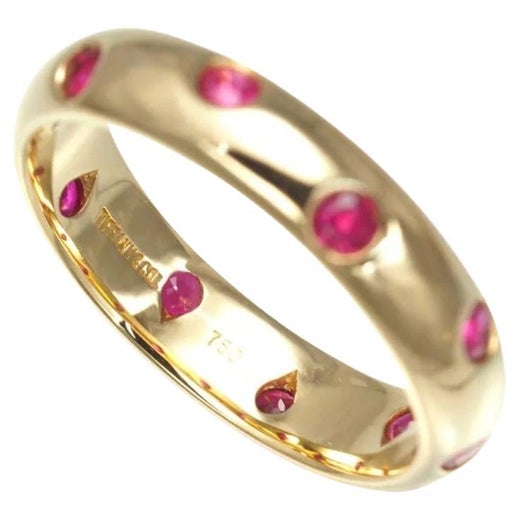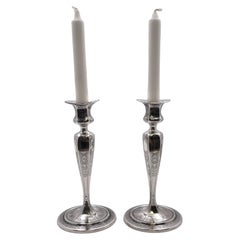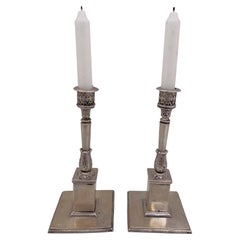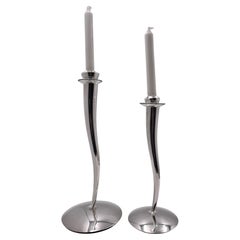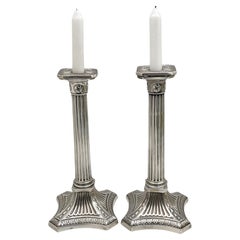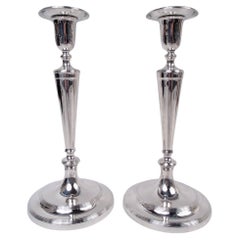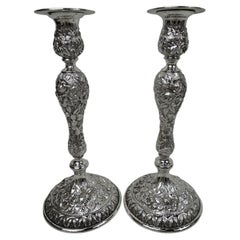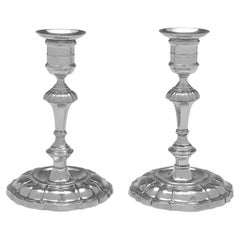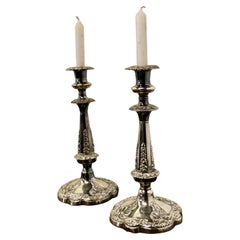Pair of Tiffany Sterling Silver Candle Holders Designed by Louis C Tiffany
About the Item
- Creator:Louis Comfort Tiffany (Designer),Tiffany & Co. (Maker)
- Dimensions:Height: 3.3 in (8.39 cm)Diameter: 3.75 in (9.53 cm)
- Sold As:Set of 2
- Materials and Techniques:
- Place of Origin:
- Period:
- Date of Manufacture:20th Century
- Condition:
- Seller Location:New York, NY
- Reference Number:Seller: 4075871stDibs: LU5594243573482
Louis Comfort Tiffany
Louis Comfort Tiffany was undoubtedly the most influential and accomplished American decorative artist in the decades that spanned the late 19th and early 20th centuries. Beyond glass, he worked in mediums that ranged from furniture and enameling to ceramics and metalware, with his Tiffany Studios producing highly collectible table lamps, vases, serveware and other objects.
The name Tiffany prompts thoughts of two things: splendid gifts in robin’s-egg blue boxes and exquisite stained glass. Charles Lewis Tiffany founded the former, and his son, Louis, is responsible for exemplars of the latter.
By the time Louis Comfort Tiffany was born, the stationery and “fancy goods” emporium his father had established 11 years before had grown to become the most fashionable jewelry and luxury items store in New York. Tiffany fils declined to join the family business and pursued a career as an artist. He studied painting with several teachers, notably the scenic painter Samuel Colman, while spending long periods touring Europe and North Africa. Though he painted his entire career, visits to continental churches sparked a passionate interest in stained glass. Tiffany began experimenting with the material and in 1875 opened a glass factory-cum-laboratory in Corona, Queens — the core of what eventually became Tiffany Studios, a multimedia decorative-arts manufactory.
Tiffany developed a method in which colors were blended together in the molten state. Recalling the Old English word fabrile, meaning “hand-wrought,” he named the blown glass Favrile, a term that signified handmade glass of unique quality. In his glass designs, Tiffany embraced the emerging Art Nouveau movement and its sinuous, naturalistic forms and motifs. The pieces won Tiffany international fame. (Siegfried Bing, the Paris entrepreneur whose design store, L’Art Nouveau, gave the stylistic movement its name, was the leading European importer of Tiffany pieces.)
By 1902, along with glass, Tiffany was designing stained-glass lamps and chandeliers as well as enameled metal vases, boxes and bowls, and items such as desk sets and candlesticks. Today such pieces epitomize the rich aesthetics of their era.
Antique Tiffany Studios table lamps are the most recognizable and the most prized. They range in price from $60,000 to upward of $2 million for intricate shade designs like the Dragonfly. Tiffany glass vases and bowls are generally priced from $1,000 to $30,000 depending on size, color, condition and form. Simpler accessories such as metal trays and small picture frames can fetch from $800 to $3,000. Tiffany design of any type is an emblem of taste and craftsmanship. As you will see on 1stDibs, Louis Comfort Tiffany ensured that each piece he and his company produced, magnificent or modest, was a work of art.
Find Louis Comfort Tiffany vases, serveware and other items on 1stDibs.
Tiffany & Co.
Tiffany & Co. is one of the most prominent purveyors of luxury goods in the United States, and has long been an important arbiter of style in the design of diamond engagement rings. A young Franklin Delano Roosevelt proposed to his future wife, Eleanor, with a Tiffany ring in 1904. Vanderbilts, Whitneys, Astors and members of the Russian imperial family all wore Tiffany & Co. jewelry. And Jacqueline Kennedy Onassis preferred Tiffany china for state dinners at the White House.
Although synonymous with luxury today, the firm started out rather modestly. Charles Lewis Tiffany and John B. Young founded it in Connecticut as a “stationery and fancy goods emporium” in 1837, at a time when European imports still dominated the nascent American luxury market. In 1853, Charles Tiffany — who in 1845 had launched the company’s famed catalog, the Blue Book, and with it, the firm’s signature robin’s-egg blue, which he chose for the cover — shifted the focus to fine jewelry.
In 1868, Tiffany & Co. gained international recognition when it became the first U.S. firm to win an award for excellence in silverware at the Exposition Universelle in Paris. From then on, it belonged to the pantheon of American luxury brands.
At the start of the Gilded Age, in 1870, Tiffany & Co. opened its flagship store, described as a "palace of jewels" by the New York Times, at 15 Union Square West in Manhattan. Throughout this period, its designs for silver tableware, ceremonial silver, flatware and jewelry were highly sought-after indicators of status and taste. They also won the firm numerous accolades, including the grand prize for silverware at the Paris Exposition of 1878. Among the firm’s glittering creations from this time are masterworks of Art Nouveau jewelry, such as this delicate aquamarine necklace and this lavish plique-à-jour peridot and gold necklace, both circa 1900.
When Charles Lewis Tiffany died, in 1902, his son Louis Comfort Tiffany became the firm’s design director. Under his leadership, the Tiffany silver studio was a de facto design school for apprentice silversmiths, who worked alongside head artisan Edward C. Moore. The firm produced distinctive objects inspired by Japanese art and design, North American plants and flowers, and Native American patterns and crafts, adding aesthetic diversity to Tiffany & Co.’s distinguished repertoire.
Tiffany is also closely associated with diamonds, even lending its name to one particularly rare and exceptional yellow stone. The firm bought the Tiffany diamond in its raw state from the Kimberley mines of South Africa in 1878. Cut to create a 128.54-carat gem with an unprecedented 82 facets, it is one of the most spectacular examples of a yellow diamond in the world.
In a broader sense, Tiffany & Co. helped put diamonds on the map in 1886 by introducing the American marketplace to the solitaire diamond design, which is still among the most popular engagement-ring styles. The trademark Tiffany® Setting raises the stone above the band on six prongs, allowing its facets to catch the light. A lovely recent example is this circa-2000 platinum engagement ring. Displaying a different design and aesthetic (but equally chic) is this exquisite diamond and ruby ring from the 1930s.
Find Tiffany & Co. jewelry, serveware and decorative objects for sale on 1stDibs.
- ShippingRetrieving quote...Shipping from: New York, NY
- Return Policy
More From This Seller
View AllVintage 1910s American Candlesticks
Silver, Sterling Silver
Antique 18th Century European Candlesticks
Silver
20th Century Italian Mid-Century Modern Candlesticks
Silver, Sterling Silver
Antique 1890s American Candlesticks
Silver, Sterling Silver
20th Century English Candlesticks
Silver, Sterling Silver
20th Century German Mid-Century Modern Candlesticks
Silver, Sterling Silver
You May Also Like
Early 20th Century American Edwardian Candlesticks
Sterling Silver
Early 20th Century American Edwardian Candlesticks
Sterling Silver
Antique Early 1900s English Victorian Candlesticks
Sterling Silver
Antique 1880s Rococo Revival Wall Lights and Sconces
Silver Plate
Early 20th Century American Neoclassical Candlesticks
Sterling Silver
1990s English Victorian Candlesticks
Sterling Silver
Read More
Wear Louis Comfort Tiffany’s Genius on Your Finger with This Vivid Ring
In his jewelry making, the designer rarely used diamonds — this rare example has two.
Selena Gomez’s Classic Wedding Look Features Ralph Lauren and Tiffany & Co.
The actress and Benny Blanco tied the knot with style in Santa Barbara over the weekend.
